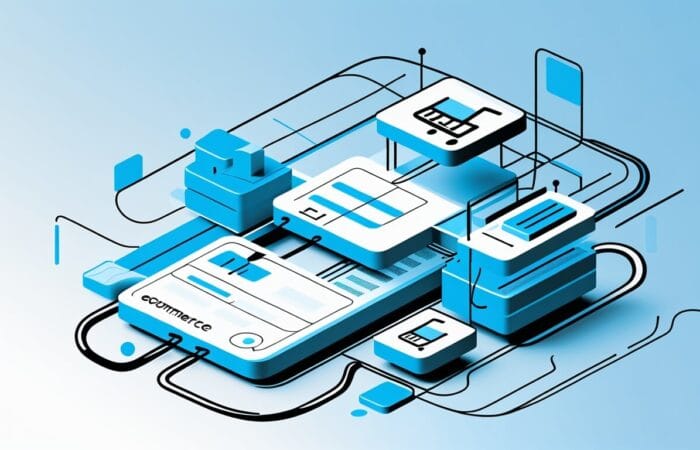Table of Contents
Choosing the right
The complexity of
This comprehensive analysis reveals everything you need to know about
Understanding
Complete Breakdown of Shopify Pricing Plans
The Basic
Payment processing through
The Basic plan supports up to four inventory locations and includes basic reporting capabilities that cover essential metrics like sales summaries, customer information, and product performance. However, advanced reporting features like custom report building and detailed analytics require upgrading to higher-tier plans, which can limit data-driven decision making for growing businesses.
Staff account limitations restrict Basic plan users to two staff accounts, which may constrain team collaboration as businesses grow beyond solopreneurs. Additional features include abandoned cart recovery, gift card functionality, and professional reports, though some of these features have limitations compared to higher-tier plans.
The
Professional reporting capabilities distinguish the
Gift card functionality becomes fully featured on the
The plan supports up to five staff accounts and 1,000 inventory locations, accommodating larger teams and more complex fulfillment operations. Recovery of abandoned carts becomes more sophisticated with this plan, enabling automated email sequences that can recover significant lost revenue.
Advanced
Advanced report builder functionality enables custom reporting that can track virtually any business metric, providing insights that drive strategic planning and operational optimization. Third-party calculated shipping rates integrate with major carriers to provide accurate real-time shipping costs, improving customer satisfaction while optimizing shipping margins.
Real-time carrier shipping calculations help reduce cart abandonment caused by shipping cost surprises while ensuring accurate shipping revenue collection. This feature becomes particularly valuable for businesses shipping diverse products or serving geographically dispersed markets where shipping costs vary significantly.
The Advanced plan includes up to 15 staff accounts and unlimited inventory locations, supporting complex organizational structures and sophisticated fulfillment networks. Advanced features also include enhanced security and performance capabilities that benefit high-traffic stores during peak shopping periods.
Shopify Plus Pricing and Enterprise Features
Shopify Plus represents the platform’s enterprise solution, starting at approximately $2,000 per month with customized pricing based on specific requirements and transaction volumes. This premium offering targets businesses processing substantial sales volumes or requiring advanced customization, integration, and support capabilities beyond standard plan limitations.
Unlike standard
The platform includes advanced automation features through
Dedicated support teams provide priority assistance with faster response times and access to specialized technical expertise. This enhanced support becomes crucial for businesses where downtime or technical issues can result in significant revenue losses or operational disruptions.
Advanced customization capabilities include access to checkout customization, multiple store management from single dashboards, and enhanced API access that enables sophisticated integrations with existing enterprise systems. These capabilities allow businesses to maintain unique brand experiences while leveraging
Shopify Plus also includes access to exclusive apps and features not available on standard plans, such as
International expansion features become more sophisticated with
Hidden Costs and Additional Expenses
Transaction fees represent one of the most significant ongoing costs that many merchants underestimate when evaluating
App subscription costs can quickly accumulate as businesses add specialized functionality to their stores. Popular apps for email marketing, customer reviews, inventory management, and analytics often cost $10-50 monthly each, with some specialized tools commanding higher prices. A typical growing business might spend $100-300 monthly on app subscriptions beyond their base
Theme costs vary significantly depending on customization requirements and design complexity. Free
Domain registration and email services add ongoing costs that are often overlooked during initial planning. Domain names typically cost $10-20 annually, while professional email services may add $5-15 monthly per user. SSL certificates are included with
Payment gateway fees beyond
Staff account limitations on lower-tier plans may force premature upgrades for growing teams. Additional staff accounts beyond plan limits typically aren’t available, requiring plan upgrades that might include unnecessary features just to accommodate team growth.
Inventory location limits can impact businesses with complex fulfillment networks or those planning expansion into multiple warehouses or retail locations. Exceeding these limits requires plan upgrades or workarounds that may complicate inventory management and fulfillment operations.
Professional photography and content creation represent significant upfront costs for new stores. High-quality product photography typically costs $25-100 per product, while professional copywriting and content creation can add thousands to launch budgets depending on catalog size and content requirements.
Money-Saving Strategies and Optimization Tips
Annual billing provides immediate cost savings across all
Strategic app selection focuses on choosing versatile tools that provide multiple functionalities rather than specialized single-purpose applications. Comprehensive platforms like Klaviyo for email marketing often include features like SMS marketing, customer segmentation, and analytics that might otherwise require separate apps, reducing total subscription costs while simplifying management.
Timing plan upgrades strategically can minimize unnecessary expenses while ensuring access to needed features. Monitor your transaction fees, staff account usage, and feature requirements regularly to identify optimal upgrade timing rather than upgrading prematurely or maintaining oversized plans during business fluctuations.
Negotiating with app developers can yield discounts for annual payments, early-stage businesses, or bulk purchases. Many app companies offer startup discounts, annual payment incentives, or custom pricing for businesses with specific requirements or larger user bases.
Leveraging free alternatives for basic functionality can significantly reduce app costs during early business stages.
Optimizing payment processing involves carefully evaluating total transaction costs including both
Monitoring usage patterns helps identify opportunities to optimize plan selection based on actual business needs rather than projected requirements. Regular review of staff account usage, inventory locations, and feature utilization can reveal opportunities to downgrade or adjust services to better match current operations.
Bulk purchasing strategies for themes, apps, or services can provide cost advantages compared to individual purchases. Some developers offer package deals for multiple apps or services, while design agencies may provide discounts for comprehensive theme and customization packages.
Plan Selection Guide for Different Business Types
Startup businesses typically benefit most from Basic
The key consideration for startups involves projecting when transaction volume growth will make plan upgrades cost-effective due to reduced transaction fees. Monitoring monthly transaction fee expenses helps identify optimal upgrade timing when fee savings offset increased subscription costs.
Growing businesses often find the standard
Professional reporting features enable growing businesses to identify trends, optimize marketing spend, and make informed inventory decisions that can significantly impact profitability. Gift card functionality can drive additional revenue while improving cash flow through prepaid customer purchases.
Established businesses with complex operations may require Advanced
The decision point for Advanced
Enterprise operations generally find
International businesses benefit significantly from
Cost Comparison with Competitors
Comparing
WooCommerce appears less expensive initially but requires separate hosting, security, maintenance, and plugin costs that can exceed
BigCommerce offers competitive pricing with some advanced features included in base plans, but limited theme customization options and app ecosystem constraints may require expensive custom development to achieve specific business requirements. Transaction fees remain competitive with
Wix provides lower-cost entry points but lacks sophisticated e-commerce capabilities needed for serious online retail operations. The platform becomes cost-prohibitive when accounting for limitations in inventory management, marketing tools, and scalability requirements that growing businesses encounter.
Square Online offers free plans with transaction-based revenue models, making it attractive for very small businesses with limited budgets. However, customization limitations and reduced marketing capabilities may constrain growth potential compared to
When evaluating alternatives, consider long-term costs including migration expenses, learning curves, and potential revenue limitations imposed by platform constraints.
The platform’s focus on user experience, reliability, and continuous feature development justifies premium pricing for businesses that value time savings, reduced technical complexity, and access to cutting-edge e-commerce capabilities that drive revenue growth and operational efficiency.
Understanding









